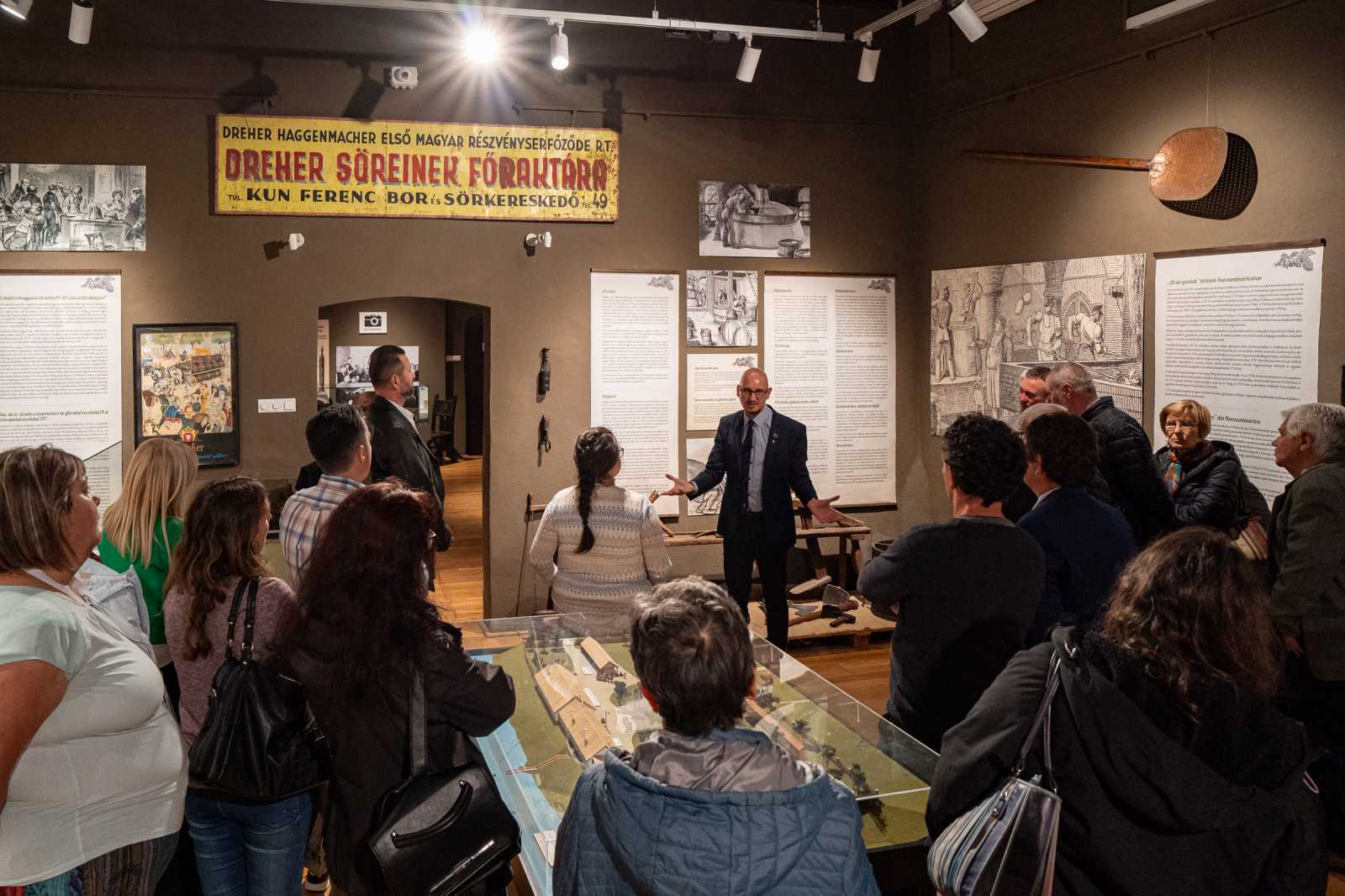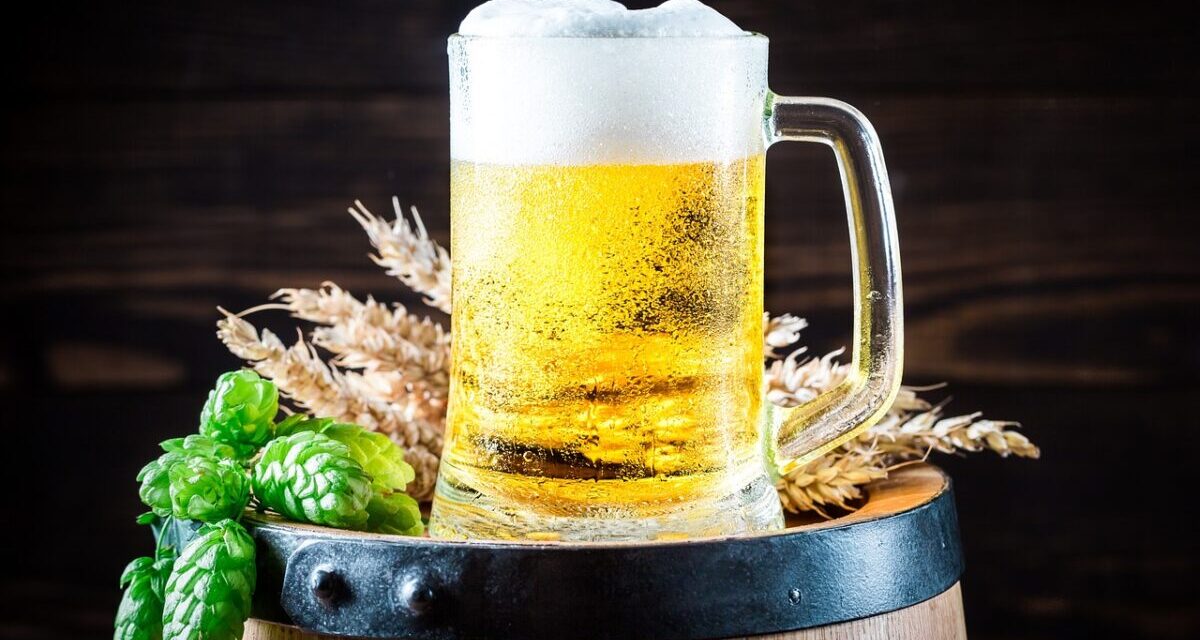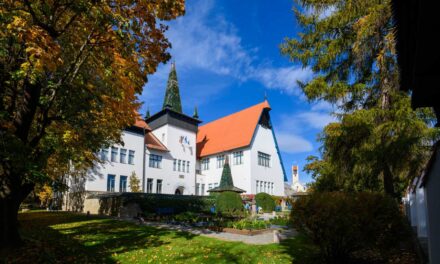Who and how brewed beer in historical Hungary? Why did Kőbánya, i.e. Budapest, become the stronghold of Hungarian beer production? Are Hungarians a wine or beer drinking nation? Is beer a citizen's drink or a worker's drink? All these questions can be answered by those who visit the Csíki Székely Museum This beer! titled, opened his exhibition on Tuesday.
The joint traveling exhibition of the Hungarian Trade and Hospitality Museum and the Kunszentmárton Museum of Local History, which opened on Tuesday in Csíkszereda, gives a comprehensive picture of historical Hungary's beer consumption, gastronomic culture, centuries-old and millennia-old traditions - which includes Transylvanian brewing.
This is the 13th stop of his traveling exhibition.
At the opening on Tuesday, museum director Aranka Karda-Markaly greeted those present, and after Róbert Török, director of the Hungarian Trade and Hospitality Museum, gave a striking welcome speech, the opening continued in an unusual way. The attendees were able to taste the products of one of the well-known beer brands, and then they were able to take part in a colorful and extremely informative guided tour with the help of the head of the Hungarian institution.

Photo: Csíki Székely Museum | Imre Gegő
"Hops, barley, Heaven's blessing!" Róbert Török quoted an old saying at the start of the exhibition.
"After saying this, the old brewer is a lad and taps his pint three times: once for the country, once for the city, and once for the respectable brewing company"
added the museum director. The head of the institution emphasized that Transylvanian brewing also has a great industrial history tradition in the 18th and 19th centuries. beginning in the 19th century, what's more, the oldest continuously operating Hungarian brewery was established in Timisoara in 1718. The first mentions of beer making in Csíkszereda (Csíksomlyó) date back to 1580, the specialist pointed out. Speaking about the beer production in Csíkszereda, Róbert Török recalled the history of the Romfeld family's factory, and then also touched on the brewery founded in 1974, which is still in operation today.
The exhibition presents the raw materials and procedures of beer making in detail, we can learn about the storage of beer and the habits of its consumption. The topic of toasting with beer is particularly interesting, as there are many stories and legends associated with it. As Róbert Török said, beer glasses and mugs have never been toasted together throughout history. Knocking on the table mentioned above was a common custom.
At the same time, the "prohibition" of toasting also had practical reasons from the point of view of caterers, as thin-walled beer glasses were simply difficult to withstand being toasted. As proof of this, one of the exhibits is a sign prohibiting toasting.
It was said that the officers of the imperial army would have toasted our heroes with beer during the execution of the Arad martyrs. However, it is a fact that the production and consumption of beer is closely connected with German-speaking areas. The master brewers and the heads of the guilds traditionally active in our country were typically of German nationality, coming from Austria, Germany and the Czech provinces, or Jews. Thus, the connection between terrible reprisals and beer consumption has some basis in reality.
Visitors to the exhibition can learn about the drinking culture of our conquering ancestors, medieval brewers, then the start of industrial beer production, the history of our largest factories, state brewing and small-scale breweries that are still operating today. malt, what is the difference between bottom- and top-fermented beers.
Walking through the exhibition, you can follow the processes of the various beer-making processes, and the means of storage and consumption are displayed, from wooden barrels to stainless steel containers to beer mugs and beer cans. The exhibition also covers small-scale beer production and the history of the largest beer conglomerate, and at the end, visitors can capture themselves in a cozy photo corner - in style - in the company of beer mugs.
The exhibition can be visited at the Csíki Székely Museum until December 31, 2023.
Featured Image: Pixabay












